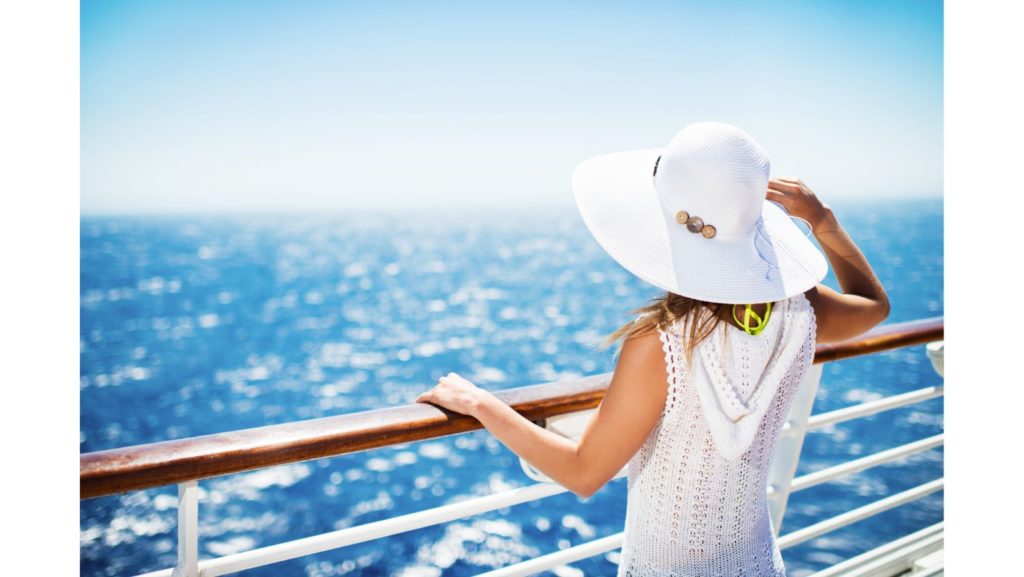Welcome aboard the exciting world of cruising!
Whether you’re a seasoned in exploration or a first-time cruiser, there’s always something new to discover on the high seas.
From the serene rhythm of the waves to the endless entertainment options, cruises offer an unparalleled vacation experience that caters to all ages, from playful kids to adventurous seniors.
But as with any journey, safety is paramount, and understanding what to expect can make your voyage smoother and more enjoyable.
In this blog post, we’ll navigate through the ins and outs of cruising.
So, fasten your life jackets and get ready to set sail on a sea of knowledge!
Here are our destination points:
- Why do people want to go on a cruise?
- How risky are cruise ships?
- Is it a good idea to bring kids on a cruise?
- How much is the average cruise cost?
- How to choose cruise package?
- Do I really need a passport to go on a cruise?
- What to expect as a first time cruiser?
- Does CBD help with sea sickness?
- Can I bring CBD on cruise?
- Is it OK to travel with CBD products?
- Is cruising safe for seniors?
We have a lot of information to sail through, so let’s get going.
Why do people want to go on a cruise?
Ahoy there, friends!
Picture this: you’re lounging on a deck chair, the sun is shining, and there’s nothing but the open sea in front of you.
Wait, did I mention the unlimited ice cream?
Yup, that’s right. Welcome to the wonderful world of cruising!

But why do people love cruising so much?
Is it the allure of the high seas? The promise of exotic destinations? Or is it just the thrill of being on a ship that’s as big as a small town?
Let’s jump right into it.
Unpack Once, See the World
First up, let me tell you about one of the biggest perks of cruising: unpacking only once.
You know how it is when you travel, constantly packing and unpacking your suitcase.
It’s like trying to solve a Rubik’s cube that also happens to hold all your underwear.
But on a cruise?
You unpack once and your hotel room comes with you wherever you go.
Variety is the Spice of Life
Speaking of going places, cruises take you to multiple destinations on a single trip.
One day you’re exploring ancient ruins, the next you’re snorkeling in crystal clear waters.
It’s like having your cake and eating it too, except the cake is the world and you’re… well, you get the idea.
All-Inclusive Bliss
Cruises are pretty much an all-you-can-eat buffet of vacation delights.

Accommodation, meals, entertainment – it’s all included in your fare.
And did I mention the unlimited ice cream?
Fun for the Whole Family
Cruises are like the Swiss Army knife of vacations: they’ve got something for everyone.
Kids clubs for the little ones, spas for the grown-ups, and activities galore for everyone in between.
It’s family bonding without the “are we there yet?” car rides.
Meet New Friends
On a cruise, you’re sharing the ship with a whole bunch of potential new friends.
It’s like summer camp, but with better food and less mosquito bites.
So, there you have it, folks. Cruising is a unique, fun-filled way to see the world.
And remember: if all else fails, there’s always the unlimited ice cream.
How risky are cruise ships?
If you’re concerned about whether cruise ships are worth any potential risks, let’s look at them more closely.
Health Hazards on Board
First up, let’s talk health.
Cruise ships are like floating cities, with thousands of people all in one place.
And just like any city, they can be a hotbed for illnesses if proper precautions aren’t taken.
To address these potential issues, cruise lines have seriously upped their game when it comes to health and safety measures.
Enhanced sanitation procedures, improved air filtration systems, and strict health protocols are now the norm rather than the exception.
Weather Woes
Unpredictable weather can sometimes throw a wrench into your cruise plans.
Hurricanes, tsunamis, and rough seas can all pose risks.

But again, cruise lines are well-equipped to handle such situations.
They have sophisticated weather tracking systems and contingency plans in place.
Plus, they can reroute ships to avoid bad weather, ensuring your safety remains their top priority.
Safety Concerns
While cruise ships are generally safe, accidents can happen. Fires, power outages, and even the rare cases of ships running aground have occurred.
But remember, these instances are few and far between.
Cruise lines invest heavily in safety training and equipment to prevent such incidents.
Security Issues
Lastly, let’s touch on personal security. Just like any public place, cruise ships can be a target for theft.
It’s always a good idea to use the safe in your cabin for valuables and to remain vigilant about your surroundings.

So, while there are risks associated with cruising – just as there are with any form of travel – the key here is preparation and awareness.
Cruise lines are committed to ensuring your experience is as safe and enjoyable as possible.
One encouragement: don’t let fear hold you back from exploring the world (or the open seas!).
As the old saying goes, “A ship in harbor is safe, but that’s not what ships are built for.”
So go forth, dear readers, and set sail on your next adventure!
But maybe pack some hand sanitizer, just in case.
Is it a good idea to bring kids on a cruise?
Next let’s talk about kids and cruises.
First things first, let’s debunk a common myth: cruises aren’t just for retirees looking to sip piña coladas while they play shuffleboard.
Many cruise lines have started focusing more on family-friendly amenities.
From water parks to kid-friendly entertainment options, these floating cities are becoming quite the family vacation hotspot.
But is it a good idea to bring your kids along?

All Aboard the Fun Ship
One of the biggest benefits of taking your kids on a cruise is the sheer variety of activities available.
There’s so much more than just swimming pools and buffet lines (though those are pretty great, too).
Many modern cruise ships have gone all out to create a fun atmosphere for kids.
Think about it: Where else can your kids go rock climbing, watch a magic show, learn to cook, and splash around in a water park all in one day?
Plus, with supervised kids’ clubs, you can enjoy some ‘me time’ knowing your children are having the time of their lives under the watchful eyes of trained staff.
Education on the High Seas
Learning doesn’t have to stop just because it’s vacation time.
And cruises offer a unique opportunity for some hands-on education.
Visiting different destinations can give your kids a firsthand experience of other cultures.
They’ll learn about geography, history, and even pick up a few words in another language.
It’s like a field trip, but with way better food!
The Not-So-Smooth Sailing
Now, let’s not ignore the potential downsides.
For one thing, kids can get seasick. If your child is prone to motion sickness, a cruise might not be the best idea.
Also, while many cruise ships have medical facilities, they might not be equipped to handle all types of emergencies.
So if your child has a serious medical condition, it’s worth discussing the trip with your doctor first.
To Cruise or Not to Cruise?
In the end, whether or not to bring your kids on a cruise comes down to your family’s specific needs and interests.
If your kids love adventure and don’t mind being away from home, a cruise could be an unforgettable experience.
How much is the average cruise cost?
It’s a fair question – after all, budgeting is a crucial part of any vacation planning.
Let’s crunch some numbers.
The Average Cost of a Cruise
The cost of a cruise can vary greatly depending on several factors such as the destination, duration, cruise line, and the type of cabin you choose.
According to multiple sources, the average cost of a cruise fare ranges from about $130-$260 per person, per day.
That means, for a typical seven-night cruise, you could be looking at anywhere between $910 and $1,820 per person just for the fare.
But remember, this is an average estimate – some cruises may cost less, and others may cost more.

What’s Included in the Cost?
Now, you might be thinking, “That’s a pretty penny!”
But remember, your cruise fare typically includes your accommodation, meals in the main dining areas, and a range of entertainment and activities on board.
Additional Costs to Consider
While your cruise fare includes a lot, there are additional costs you should keep in mind.
Guests spend an average of $498 per person on extras such as drinks, specialty dining, shore excursions, gratuities, and onboard shopping.
So, if we add these additional costs to our original estimate, a seven-night cruise could cost anywhere between $1,408 and $2,318 per person.
Remember, these are averages and actual costs can vary.
Just remember to budget for those extra expenses to make sure you’re not caught off guard. Happy cruising!
How to choose cruise package?
Wanting to go on a cruise but feeling overwhelmed by so many different cruise packages out there?
Here are some steps to help you make the best decision for your budget.
1. Determine Your Budget
First things first: how much are you willing to spend?
Cruise packages can vary greatly in price.
Establishing a budget up front will help narrow down your options.
2. Identify Your Travel Preferences
Are you looking for relaxation or adventure?
Do you prefer a bustling mega-ship with tons of activities or a smaller, more intimate vessel?
Your preferences will play a big role in determining which cruise packages are a good fit.
3. Choose Your Destination
Where do you want to go?
The Caribbean, Alaska, the Mediterranean?
Different cruise lines specialize in different regions, so your desired destination can help you decide which cruise package to choose.

4. Consider the Timing
When you plan to cruise can also impact which package you should choose.
Some destinations have peak seasons when they’re particularly popular (and expensive).
If you’re flexible with your dates, you could score some great deals in the off-season.
5. Review Onboard Amenities
Look at what each package includes in terms of onboard amenities.
Some cruise packages might include extras like drink packages, specialty dining, or onboard credits.
Others might offer family-friendly amenities like kids clubs or water parks.
6. Research the Cruise Line
Finally, do some research on the cruise line itself.
Look at reviews from past passengers and see what they liked or disliked.
This can give you a sense of what to expect and help you determine if a particular cruise line is right for you.
Choosing a cruise package doesn’t have to be a daunting task.
With a bit of planning and research, you’ll be on your way to a fantastic vacation in no time.
Do I really need a passport to go on a cruise?
Typically, when traveling outside of the U.S., a passport is recommended.
However, cruises are a unique case.
According to the U.S. Customs and Border Protection, you don’t necessarily need a passport for cruises that begin and end at the same U.S. port, also known as “closed loop” cruises.
In these cases, passengers are required to present proof of citizenship and a government-issued photo ID instead.
A birth certificate and driver’s license can fulfill this requirement.

But here’s the thing: while the U.S. government might not require a passport for closed loop cruises, your cruise company might.
Some cruise lines have policies that require passengers to carry passports, regardless of the itinerary.
Even if your cruise line doesn’t require a passport, having one can still be beneficial.
For instance, if your cruise starts or ends in a foreign country, including Canada, you’ll need a passport.
Likewise, if your cruise includes stops in certain countries, those countries might require a passport for you to disembark and explore.
Moreover, if an emergency arises and you need to fly back to the U.S. mid-cruise, a passport would be necessary.
So, do you absolutely need a passport to go on a cruise?
Not always.
Is it a good idea to have one?
Generally, yes.
When in doubt, it’s best to check with your specific cruise line or a travel advisor to understand what you’ll need for your particular itinerary.
What can I expect as a first time cruiser?
Heading into uncharted waters (figuratively speaking, of course) can be a bit daunting.
We’ll guide you through what to expect on your maiden voyage.
1. Check-In and Embarkation
First things first: getting on the ship.
This process is similar to checking in for a flight. You’ll need to show your ticket and passport, go through security, and then wait in a terminal area until it’s time to board.
Once on the ship, you’ll be directed to your cabin where your luggage will be delivered.
2. Safety Drill
Before the ship leaves port, there will be a mandatory safety drill.
This is where you’ll learn what to do in case of an emergency.
It’s not the most exciting part of the trip, but it’s important, so pay attention!
3. Exploring the Ship
Cruise ships are like floating resorts, complete with restaurants, shops, pools, and entertainment venues.
It can be a bit overwhelming at first, but take some time to explore and get your bearings.
Most ships provide maps or have interactive screens around the ship to help you find your way.
4. Dining Options
When it comes to dining, you’ll likely have a few different options.
There’s usually a main dining room where you can sit down for a multi-course meal, as well as various casual eateries where you can grab a quick bite.
Many ships also have specialty restaurants that offer everything from sushi to steak.
5. Entertainment and Activities
There’s no shortage of things to do on a cruise ship.
From Broadway-style shows and live music to fitness classes and trivia games, you’re sure to find something that tickles your fancy.
And let’s not forget the shore excursions at each port of call!

6. Sea Days
Sea days are when the ship doesn’t dock at any port and you have a full day to enjoy the amenities on board.
These can be some of the most relaxing days of your trip, so don’t forget to carve out some time for lounging by the pool or getting a massage at the spa.
7. Disembarkation
All good things must come to an end, and that includes your cruise.
Disembarkation is the process of leaving the ship at the end of your voyage.
You’ll be given specific instructions on when and where to gather with your luggage.
And there you have it, a brief rundown of what to expect on your first cruise.
Remember, every cruise line and ship is a little different, so some details may vary.
But one thing is certain: you’re in for an adventure like no other.
Does CBD help with sea sickness?
Yes, it appears that CBD (Cannabidiol) can help with sea sickness.
Several studies and sources suggest that CBD has anti-nausea properties, making it a potentially effective treatment for motion sickness, including sea sickness.

CBD is believed to work by interacting directly with the region of the brain responsible for causing feelings of nausea.
It interacts with serotonin receptors in the central nervous system, which play a crucial role in regulating nausea and vomiting.
It’s important to note that while CBD may help reduce the symptoms of motion sickness, individual responses can vary.
Also, you should consult with a healthcare provider before starting any new treatment or supplement, including CBD.
Can I bring CBD gummies on a cruise?
The rules around bringing CBD gummies on a cruise are not uniform and can vary based on the specific cruise line.
Current policies
Many major cruise lines, including Carnival Cruise Line, Royal Caribbean, and others, explicitly prohibit passengers from bringing CBD of any kind on board.
This policy is likely due to the fact that while certain CBD products like CBD gummies may be legal in the U.S., they are not legal in all of the ports that cruise ships visit.
However, if you’re taking a domestic flight to your cruise in the U.S., you can take most CBD gummies with you on the flight as long as they are hemp-based and contain 0.3% or less THC.
So while you might be able to bring CBD gummies on your flight to the cruise, you probably won’t be allowed to bring it on the cruise itself.
It’s always best to check with your specific cruise line to understand their policies before you travel.

For now but not forever
While CBD gummies currently face restrictions on most major cruise lines, there’s hope for the future.
Given its potential benefits for conditions like seasickness and sleep issues — common complaints among cruisers — it would be a significant step forward if cruise lines reconsider their stance.
CBD has been lauded for its potential to alleviate nausea and promote better sleep, both of which could greatly enhance the cruising experience for many guests.
However, it’s important to remember that laws and regulations vary widely from one location to another.
Any changes would need to consider not just the starting point of the cruise but also the laws at each port of call.
As understanding and acceptance of CBD products continue to grow, hopefully, we’ll see more flexibility from cruise lines in the future.
Is cruising safe for seniors?
Yes!
If you’ve been dreaming of cruising into the sunset but have some apprehensions, allow me to put your mind at ease.
It turns out, cruises aren’t just a fun way to spend your golden years; they also come with health benefits and conveniences that make them an excellent choice for seniors.
Health Benefits of Cruising for Senior
Wellness Amenities
Many modern cruise ships come equipped with wellness amenities like fitness classes, spas, and thermal suites.
These facilities provide seniors with the opportunity to stay active and indulge in self-care without even having to leave the ship.
Medical Care
One of the key benefits of cruising for seniors is the availability of healthcare on board.
This means you can travel with peace of mind knowing that medical assistance is readily available if needed.
Mental Stimulation
Cruises offer a variety of activities such as cooking demonstrations, dance lessons, trivia games, and more.
These activities not only keep seniors entertained but also stimulate the brain, promoting mental health.
Tips for Seniors Planning a Cruise

Take Advantage of Senior Cruise Fares
Many cruise lines offer discounted fares for seniors.
These discounts can make cruising more affordable, allowing you to get the most bang for your buck.
Consider Your Interests
When choosing a cruise, consider your interests.
Many cruises cater specifically to seniors, offering onboard amenities and customized activities that align with their interests.
Plan Your Excursions
While cruise lines offer excursions at each port, these can be expensive.
To save money, consider setting up your own excursions.
Just remember to return to the ship on time!
Look Into Cruise Ship Living
If you’re a senior who loves to travel, cruise ship living might be a cheaper and more exciting alternative to traditional assisted living.
It’s worth looking into if you’re up for an adventure.
Cruises offer a unique blend of relaxation, adventure, and convenience that makes them a fantastic vacation choice for seniors.
So go ahead, pack your bags, and set sail on the journey of a lifetime.
You’ve earned it!
Further Reading:
Interesting Places in the U.S. – https://bradfordwellness.co/interesting-places-in-the-us/
Top Beaches in the World – https://bradfordwellness.co/top-beaches-in-the-world/
In a Nutshell
Stepping aboard a cruise for the first time is an adventure waiting to happen.
It’s essential to come prepared—know what to expect, pack wisely, and be ready to make the most of every experience.
While CBD may have potential benefits for sea sickness, it’s best to leave it at home for now until there’s more clarity around its effects and legality in different jurisdictions.
Remember, your cruise is a chance to unwind, explore new places, and create lasting memories.

So here’s to smooth sailing and an unforgettable voyage.
Bon voyage!


